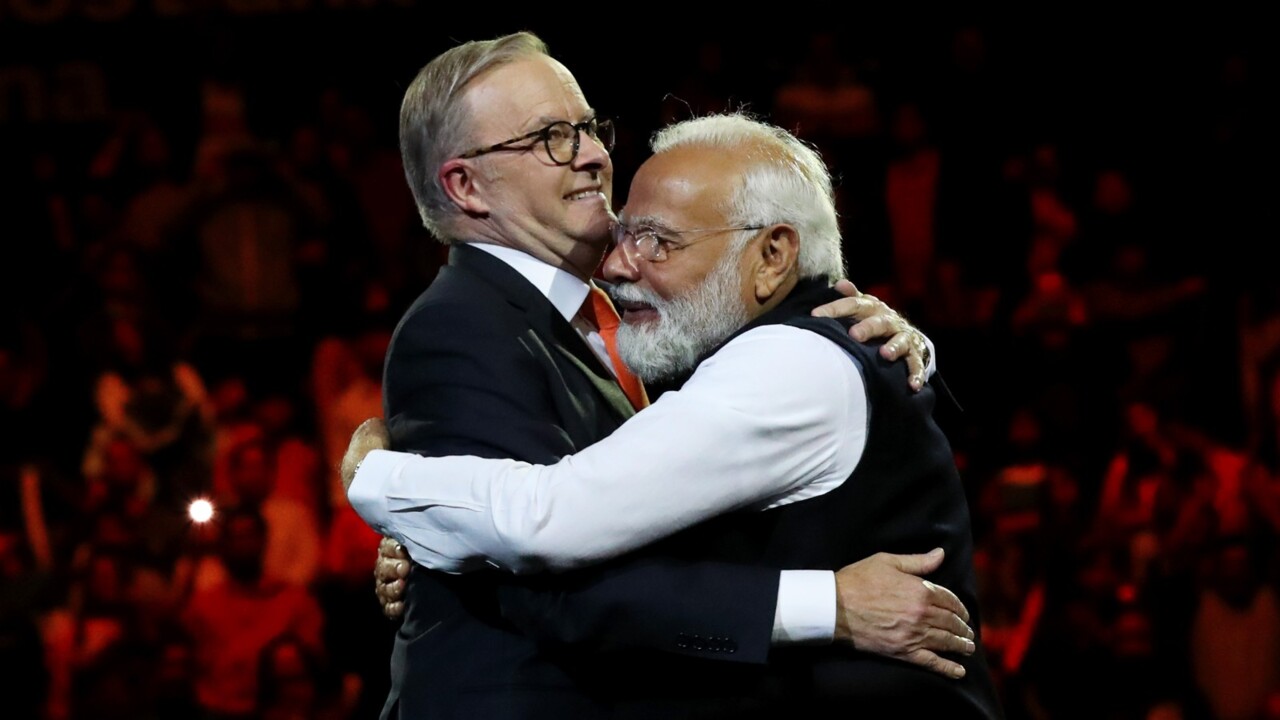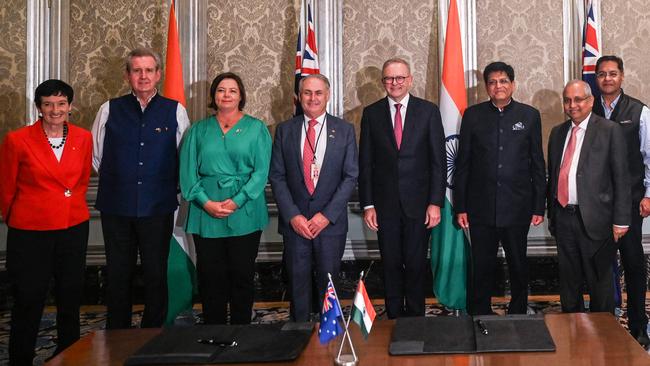Ag exports to India surge, “has the potential to be bigger than China”
Australian agricultural exports to India have risen 60 per cent in 13 months, as the government continues to work on a comprehensive free-trade agreement.

Australian agricultural exports to India are up 60 per cent since the signing of a new trade agreement last year.
While Trade Minister Don Farrell is eagerly trying to wrap-up a comprehensive free-trade agreement with India, exports to Australia’s close cultural ally have been steadily building 18 months on from the signing of an economic co-operation and trade agreement.
The ECTA is viewed as a precursor to a fully-fledged free-trade agreement and an important step in trade negotiations with the South Asian behemoth, which had not signed a deal with a developed country in more than a decade.
Mr Farrell travelled to Abu Dhabi in February to meet with his Indian counterpart to work on improved access for dairy, horticulture, wine and critical minerals.
But gains have already been made since a range of tariffs were slashed or reduced on January 1 last year, with exports of sheep meat up 160 per cent, almonds up 120 per cent, broad beans up 200 per cent and seafood up 55 per cent. According to the federal government, agricultural exports are up 60 per cent since the deal was implemented 13 months ago.
National Farmers’ Federation horticulture council president Jolyon Burnett said while a lot of those gains were off a low base, India could be a major market for Australian fruit and vegetables.
“I believe for horticulture it has the potential to be bigger than China,” Mr Burnett said. “Almonds are sending real volumes over there. So it is developing and I think it will develop rapidly because Australia’s relationship with India, at least for the moment, is less sensitive and there are very strong ties between India and Australia, cultural ties and I think the government is right to be excited.”

The Australia-India ECTA was ratified by the Senate in November 2022, offering Australian businesses an opportunity to export to the globe’s largest market of nearly one and a half billion people.
From January 1 last year, high Indian tariffs on key agricultural exports were removed, including for sheep meat, fresh rock lobster and wool. Tariffs will be gradually phased out over nine years for other categories such as wine, avocados, chickpeas, berries, cherries and almonds, among other horticultural crops.
Australian Grape and Wine chief executive Lee McLean was in India last week to lay the groundwork for Australian wine to meaningfully enter the market once tariffs are reduced or eliminated in a future free-trade agreement.
It was the second visit Mr McLean has made to India since the ECTA was signed, revealing the industry’s dogged pursuit of the market as Australian grape growers and winemakers grapple with a prolonged global wine glut.
“India, if you can get it right, is a huge prize,” Mr McLean said.
“It’s the biggest whisky market in the world. In terms of consumption of alcoholic beverages, wine makes up 1 per cent. But if we can work together, we can help to grow that 1 per cent to 2 per cent and that’s going to benefit everyone.
He said part of the discussion was that benefits flowed both ways.
“We have more than 1 million people living here with Indian heritage and a thriving Indian restaurant scene. Wouldn’t it be great if you saw Indian wines in those restaurants, like you see in a French restaurant.”
Tariffs on Australian wine are between 75 and 100 per cent, with a plan to reduce them to between 25 and 50 per cent over nine years.
Meanwhile pulse farmers were celebrating last week’s announcement that tariffs on chickpeas would be suspended until at least March next year.
Grains Producers Australia deputy chairman Matthew Madden said the move has given the industry a boost of confidence.
“Now farmers are chasing seed and ensuring inputs are available. This (India) is definitely the best price for chickpeas, as well as for lentils. They put a floor in the lentil market. It’s the biggest country in the world,” Mr Madden said.





